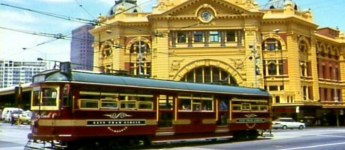 Victoria is a state located in the south-eastern corner of Australia. It is the smallest mainland state in area, but the most densely populated and urbanised. White settlement in Victoria began in the 1830s as a farming community. The discovery of gold in 1851 transformed it into a leading industrial and commercial centre. Victoria is the second most populous Australian state, after New South Wales, with an estimated population of 5,205,200 as of June 2007[3]. Melbourne is Victoria's capital and largest city, with more than 70% of all Victorians living there. Victoria is a state located in the south-eastern corner of Australia. It is the smallest mainland state in area, but the most densely populated and urbanised. White settlement in Victoria began in the 1830s as a farming community. The discovery of gold in 1851 transformed it into a leading industrial and commercial centre. Victoria is the second most populous Australian state, after New South Wales, with an estimated population of 5,205,200 as of June 2007[3]. Melbourne is Victoria's capital and largest city, with more than 70% of all Victorians living there.
Arriving in Victoria , Melbourne Airport is served by more than 25 carriers, operating international flights and a broad array of domestic destinations. The airport, which is open 24 hours every day, has a number of facilities, and offers various transportation options, including a shuttle bus service to the city, taxi hire and car rentals.  Melbourne is easily reached by air from other Australian states. Peak times for airfares are generally between the summer months of November and January, especially around Christmas. If you're planning to travel in summer, book in advance. Melbourne is easily reached by air from other Australian states. Peak times for airfares are generally between the summer months of November and January, especially around Christmas. If you're planning to travel in summer, book in advance.
Trains servicing country Victoria and interstate routes arrive at Southern Cross Station in the city. Buses stop at the Melbourne Transit Centre, near the top of Swanston Street, the city's main artery. If you're travelling from Tasmania by ferry, you'll dock at Station Pier in Port Melbourne, about four kilometres south-west of the city centre. Getting around Melbourne
Getting around Melbourne is easy, thanks to an integrated network of trains, trams and buses. Tickets allowing travel across all services can be purchased from vending machines at train stations, on trams or buses, or pre-purchased at selected shops like newsagents. Melbourne's efficient train system covers city and suburban destinations. Flinders Street Station, on the corner of Flinders and Swanston streets, is the hub of Melbourne's train system, and all metropolitan trains begin or end their journey there. The city's famous trams travel along most of Melbourne's major thoroughfares, extending out to about 15 kilometres into the suburbs. Visitors can also use the burgundy and gold City Circle Tram, which does a free 30-minute circuit around the city centre, linking major attractions and other transport routes. Melbourne's bus network links with trains and trams, as well as services destinations overlooked by either train or tram. Other ways of getting around include taxis, which are numerous and easy to spot (they are all eye-catching yellow), boat (an abundance of vessels cruise up and down the Yarra River, travelling to destinations like Williamstown) and cycling (Melbourne has an extensive trail and road network). Laid out in an elementary grid pattern, the city centre is easy to navigate on foot, while a multitude of tour operators makes sightseeing in Melbourne a breeze.
|













